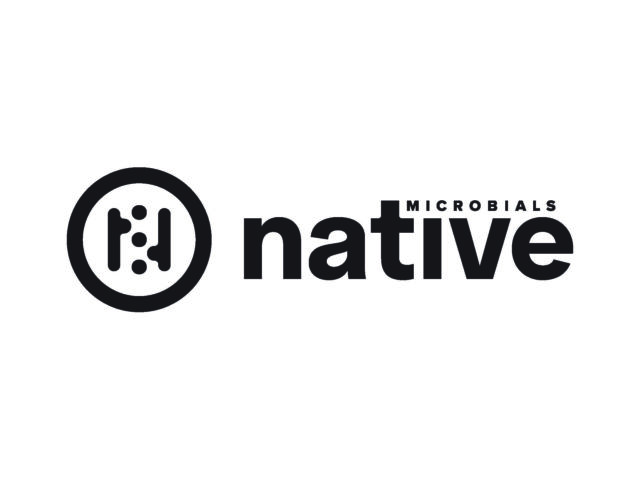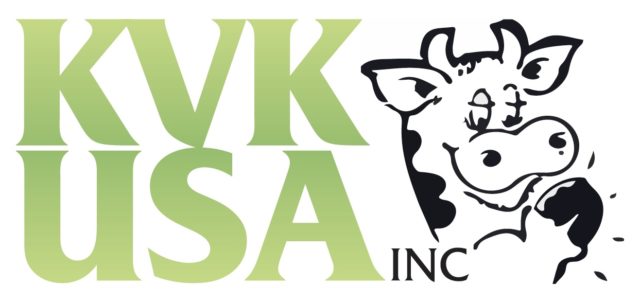Digest Highlights Dairy Revenue Protection webinars scheduled Federal order BTSCC improved in 2017 Americans drank less milk but ate more dairy in July Cattle hide values falling DFA Kansas plant suffers fire FDA unveils five-year antimicrobial plan UW – Madison Dairy Science Department sets fall visit date CDI appoints Anderson as COO
Dairy Revenue Protection webinars set, Sept. 26 and 28
Two webinars providing details on the new Dairy Revenue Protection (Dairy-RP) program will be offered, Sept. 26 and 28.
GreenStone FCS webinar scheduled
In conjunction with Greenstone Farm Credit Services in Michigan and northeast Wisconsin, Dr. Chris Wolf, Michigan State University ag economist, will provide details about Dairy-RP on Sept. 26, 10 a.m.-noon (Eastern). Wolf will provide details about the new program and compare it to existing revenue protection programs.
Webinar participants may access via computer or phone.
By computer: Join the webinar online to listen and view the presentation. Click here to register before the event.
By phone: Dial into the conference line at (866) 454-7631; conference code: 724 188 4770.
Farm Bureau hosting nationwide webinar
American Farm Bureau Insurance Services Inc. (AFBIS) will offer a nationwide Dairy Revenue Protection (Dairy-RP) webinar on Sept. 28, 1:30-3 p.m. (Central).
The program will feature Dairy-RP developers from AFBIS, the American Farm Bureau Federation (AFBF) and AFBF chief economist John Newton. Topics will include an overview of dairy markets, the history of Dairy-RP and details on how the program works.
The program is open to dairy producers, commodity groups and insurance agents. Advance registration is required, and participation will be limited to the first 1,000 registrants. Click here to register.
Federal order BTSCC improved in 2017
Milk quality monitored in four Federal Milk Marketing Orders (FMMO) improved in 2017, according to an update from the USDA’s Animal and Plant Health Inspection Service (APHIS).
The APHIS Center for Epidemiology and Animal Health (CEAH), in conjunction with the USDA’s Agricultural Marketing Service (AMS) and the National Mastitis Council’s Milk Quality Monitoring Committee, monitor U.S. milk quality using data from bulk tank somatic cell counts (BTSCCs). Data are provided by four of the nation’s 10 FMMOs: Central, Mideast, Southwest and Upper Midwest. The remaining six FMMOs do not collect BTSCC data. A new California FMMO does not go into effect until November 2018.
In total, the four FMMOs monitored milk from 21,616 producers (53.7 percent) of U.S. producers. The monitored milk accounted for 96.5 billion pounds (44.8 percent of the 215.5 billion pounds of milk produced in the U.S. in 2017). Due to milk volumes, the results are weighted more heavily toward the Upper Midwest.
In 2017, the milk-weighted geometric BTSCC mean in the U.S. was 181,000 cells per milliliter (cells per mL), a decrease from 190,000 cells per mL in 2016. Milk-weighted BTSCCs take into account the amount of milk shipped by a producer, resulting in an overall BTSCC mean of monitored milk. The producer BTSCC – which is a geometric, non-milk-weighted mean of all shipments – was 211,000 cells per mL, a decrease from the 219,000 cells per mL calculated in 2016.
Monthly monitoring continues to show that BTSCCs peak during summer (June through September). In 2017, monthly milk-weighted BTSCCs were highest during August (205,000 cells per mL) and lowest in December (162,000 cells per mL).
The FMMO BTSCC levels are lower than somatic cell count (SCC) averages reported annually using Dairy Herd Improvement Association (DHIA) reports (see April 19, 2018, issue of Progressive Dairyman). The 2017 average DHIA SCC was 197,000 cells per mL.
The DHIA data analyzes individual SCC for cows enrolled in DHIA herds across the U.S. All DHIA-enrolled cows are tested and included, even those that had milk withheld from the bulk tank. DHIA data also includes herds from the southeast U.S., which generally experience higher temperature and humidity values than herds in other parts of the country.
Americans drank less milk but ate more dairy in July
While American’s drank less milk, they ate more dairy products in July.
For fluid milk, it was a new month but a similar outcome. July 2018 overall sales of packaged conventional and organic fluid milk were down 2.2 percent compared to the same month a year earlier. July 2018 sales of conventional products totaled 3.4 billion pounds, down 2.6 percent from the previous year. Sales of organic products, at 208 million pounds, were up 4.3 percent. Organic represented about 5.76 percent of total sales for the month.
Through the first seven months of the year, U.S. fluid milk sales totaled 27 billion pounds, down 2.1 percent compared to the same period a year earlier. Year-to-date 2018 sales of conventional products totaled 25.5 billion pounds, down 2.2 percent. January-July 2018 sales of organic products, at 1.5 billion pounds, were up 0.2 percent. Organic represents about 5.5 percent of total sales for the year.
In the conventional category, only whole and flavored whole milk sales were up on a monthly and year-to-date basis. On the organic side, July sales of whole, reduced-fat (2 percent) and low-fat (1 percent) were higher than July 2017; sales of whole and reduced-fat milk are up on a year-to-date basis.
The U.S. figures represent consumption of fluid milk products in federal milk order marketing areas and California, which account for approximately 92 percent of total fluid milk sales in the U.S. Sales outlets include food stores, convenience stores, warehouse stores/wholesale clubs, nonfood stores, schools, the food service industry and home delivery.
The National All-Jersey Weekly Market Update summarized USDA’s dairy product data, which showed July domestic butter and cheese consumption increased from a year ago. Butter led the increase, gaining 11.6 percent over last July and is up 2.6 percent year to date. Total cheese consumption increased 7.1 percent above July and is up 2.6 percent for the year.
On other hand, nonfat dry milk and skim milk powder declined 44.9 percent compared to last July and are down 21 percent for the year.
Cattle hide values falling
Prices for most bovine byproduct values have been declining this year, according to the Livestock Marketing Information Center’s (LMIC) latest Livestock Monitor. In addition to beef hearts, tongues and bone meal, the value of cattle hides is also down. Hides are the biggest contributor to the cattle byproduct value calculation.
In July, heavy steer hides set the lowest weekly average value since 2012, at $68.40 per piece. The average weekly value during this five-year timeframe is $104.67 per piece. In the second week of September, the price hit $69.33 per piece, nearly 35 percent off the average weekly value. On a per-head basis, the weakness in hide prices is knocking off more than $25 per animal compared to the five-year average.
The LMIC report cites possible factors for the declining value of hides. Some companies are moving away from real leather in favor of synthetics, dampening demand. Also, the supply of hides has grown as slaughter rates have increased.
A separate USDA report might also shed some light on declining values: Chinese demand for imported hides is weakening.
The Global Agricultural Information Network (GAIN) report, from USDA’s Foreign Agricultural Service, notes China is the largest importer of hides and skins in the world. However, imports have been largely stagnant over the past five years and now have begun declining.
In the first quarter of 2018, imports were down nearly 10 percent from the same period last year. Factors include: material substitution, spiraling labor rates, tightening environmental policies, consolidation in the leather production industry and trade issues.
China remains by far the largest producer of leather and leather goods in the world and a key market for U.S. exporters. In 2017, roughly half of total U.S. hides and skins exports were shipped to China, reaching a total of $945 million. The U.S. was easily the top supplier of this raw material for the Chinese leather industry.
DFA Kansas plant suffers fire
Few details have emerged from a fire at the Dairy Farmers of America (DFA) milk powder plant in Garden City, Kansas. The cause of the fire, which occurred Sept. 12, remains under investigation.
According to a DFA spokesperson, emergency protocols were activated and all employees were safely evacuated from the building without injury. Published reports indicated the fire was in the dryer area of the plant.
The plant, which is a partnership between DFA and 12 of its member farms in southwest Kansas, produces whole and skim milk powder, nonfat dry milk powder and cream, and receives approximately 4 million pounds of milk a day from regional farms. The first load of milk was delivered in late September 2017.
The plant recently received the Sustainable Plant of the Year Award from Food Engineering magazine.
FDA unveils five-year antimicrobial plan
The U.S. Food and Drug Administration’s Center for Veterinary Medicine (CVM) unveiled a five-year plan – Supporting Antimicrobial Stewardship in Veterinary Settings: Goals for Fiscal Years 2019-2023 – for supporting antimicrobial stewardship in veterinary settings.
This plan builds on steps CVM has taken to eliminate livestock production uses of antimicrobials considered medically important for treating human disease and to bring all remaining therapeutic uses of these drugs under the oversight of licensed veterinarians. It also supports the judicious use of antimicrobials necessary for the treatment, control or prevention of specific diseases in food-producing animals.
UW – Madison Dairy Science Department sets fall visit date
The University of Wisconsin – Madison’s Department of Dairy Science is inviting prospective students and their parents to visit the campus on Oct. 16, 10 a.m. to 3:30 p.m.
Those attending will get a tour of the UW – Madison campus and Dairy Cattle Center, meet faculty, participate in hands-on workshops and learn about the wide variety of learning opportunities available to dairy science majors. Current students and alumni will be on hand to answer questions and share their experiences.
UW – Madison and extension faculty teach more than 20 undergraduate courses covering nutrition, reproduction, mammary physiology, genetics and other aspects of dairy management.
For UW – Madison admission eligibility, it is recommended that seniors rank in the top 25 percent of their high school class. Transfer students must have completed at least 24 semester hours of college-level work. Most transfer students have a GPA of at least a 3.0 on a 4.0 scale.
To attend the Dairy Science Visit Day, register online by Oct. 12 by clicking on the Future Students tab and then selecting Undergraduate. For more information, call (608) 263-3308 or email Cathy Rook.
CDI appoints Anderson as COO
California Dairies Inc. (CDI) named Brad Anderson as chief operating officer (COO), effective Sept. 10. In this role, Anderson oversees the day-to-day operations of CDI’s core commodity businesses. Based at CDI’s corporate headquarters in Visalia, California, he will report to Andrei Mikhalevsky, president and CEO.
Anderson brings 25 years of consumer products experience in commercial sales in the food and beverage industry. His most recent role was senior vice president and chief sales officer for Dean Foods. He also recently served as the board chairman of MilkPEP.
CDI is the largest member-owned milk marketing and processing cooperative in California, producing 42 percent of the state’s milk. Co-owned by more than 400 dairy producers who ship 16 billion pounds of milk annually, CDI is a manufacturer of butter, cream cheese, fluid milk products and milk powders. ![]()

-
Dave Natzke
- Editor
- Progressive Dairyman
- Email Dave Natzke







